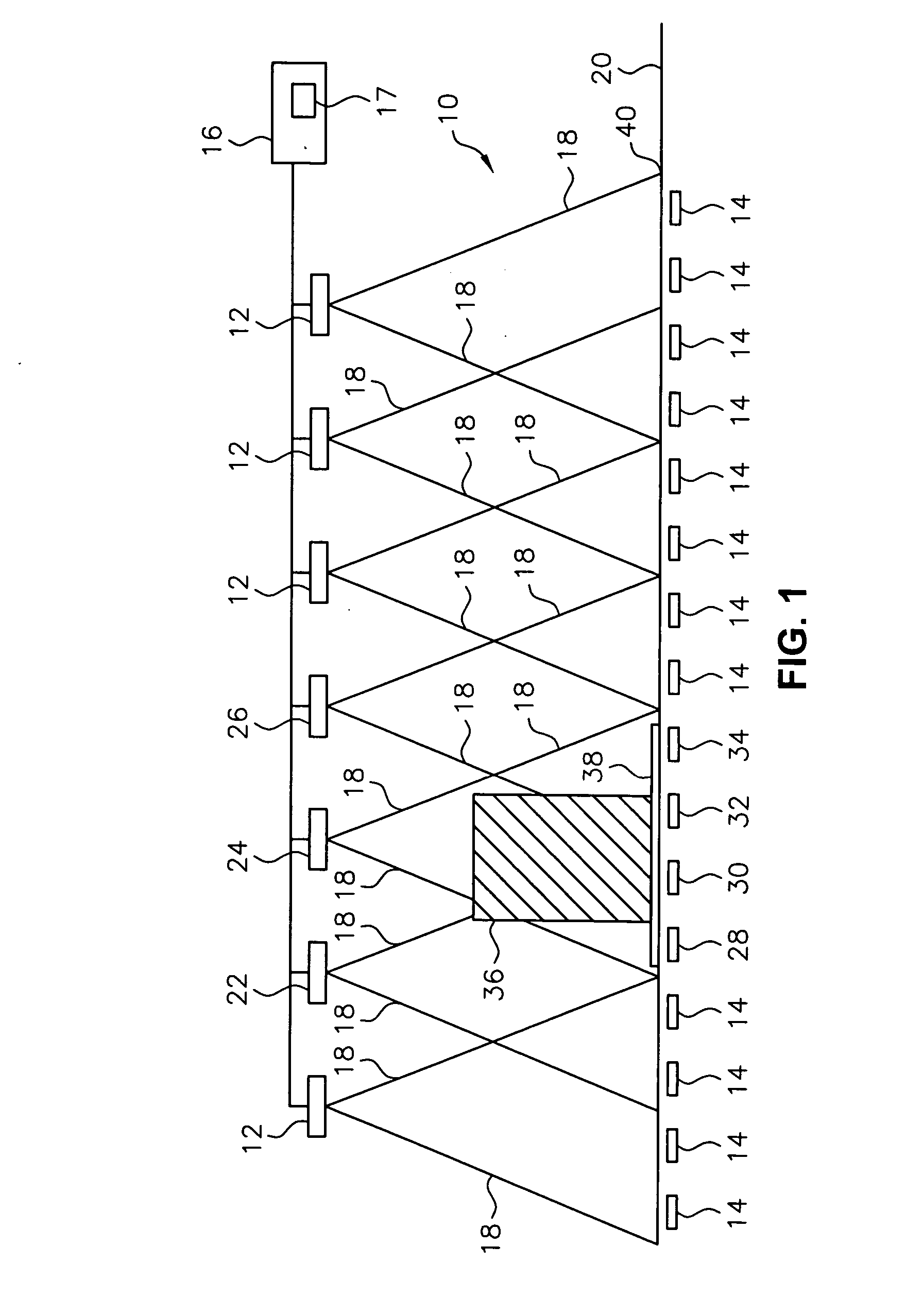Article identification and tracking using electronic shadows created by RFID tags
a technology of electronic shadows and tags, applied in the field of radio frequency identification (rfid) technology, can solve the problems of inconvenience for shoppers, high cost of anchoring merchandise, and difficulty for shoppers to examine items and try on clothes, so as to facilitate the identification and tracking of items and foster marketing and merchandising effectiveness
- Summary
- Abstract
- Description
- Claims
- Application Information
AI Technical Summary
Benefits of technology
Problems solved by technology
Method used
Image
Examples
example 1
[0044] Loss Prevention—Electronic mapping and electronic shadows may be used to determine the vector motion / direction (e.g. towards the exit of the store or towards the point of sale—cash register) and velocity (speed) of a customer in a retail store. By combining this information with the knowledge of a product in the possession of the customer (e.g., exact type, quantity, value), it may be determined if the product is likely being stolen. In particular, motion of a shadow with non-purchased goods towards an exit may indicate an attempted theft, especially if the shadow / tag does not go past a point-of-sale. This sequence of information and events could signal a store employee to approach the customer before exiting the store and thereby prevent a likely shoplifting event. The preferred tracking system of the invention can also detect theft upon a sudden loss of a tagged product (e.g., foil-lined bag, baby carriage, shopping bag, removed tag) in association with a shadow. In this si...
example 2
[0045] Cross Merchandising (e.g., complementary product selections)—By using the same information as in Example 1 (e.g., vector / motion direction of customer and the knowledge of the products in hand by the customer), if the customer's vector direction is the point of sale cash register, this knowledge and information can be used to automatically display to the customer (via a well-known display system in the queue for checkout) or to prompt a sales employee to suggest an array of complimentary products that match the customer-selected items. As another demonstration of cross merchandising, when a customer, identified as a shadow, enters a dressing room, the tracking system in accordance with the preferred embodiments can advertise goods associated with the tagged merchandise brought into the dressing room with the customer on a well-known display device located in the dressing room. The computer program in accordance with the invention can match the merchandise brought into the dres...
example 3
[0046] Customer flow / plan-a-gram / in store marketing—Based on the electronic shadow of customers and the reference map of fixed RFID sensors on stationary store fixtures and / or in the floor, a trend analysis can be established to understand customer flow. This trend analysis can allow merchandising to optimize customer flow within the store.
[0047] This same scenario, along with the markdown racks and / or store marketing, can also establish trend analysis to optimize messaging and markdown locations within the retail environment. By combining this information with the knowledge of the products in the hand or before a customer, trend analysis can also be established based on, for example, the amount of time the customer considers a product and the percentage of times that the customer purchases considered products.
[0048] The correct products in the correct locations can improve sales throughput. The ability to electronically verify exact product and type can be used to monitor invento...
PUM
 Login to View More
Login to View More Abstract
Description
Claims
Application Information
 Login to View More
Login to View More - R&D
- Intellectual Property
- Life Sciences
- Materials
- Tech Scout
- Unparalleled Data Quality
- Higher Quality Content
- 60% Fewer Hallucinations
Browse by: Latest US Patents, China's latest patents, Technical Efficacy Thesaurus, Application Domain, Technology Topic, Popular Technical Reports.
© 2025 PatSnap. All rights reserved.Legal|Privacy policy|Modern Slavery Act Transparency Statement|Sitemap|About US| Contact US: help@patsnap.com



